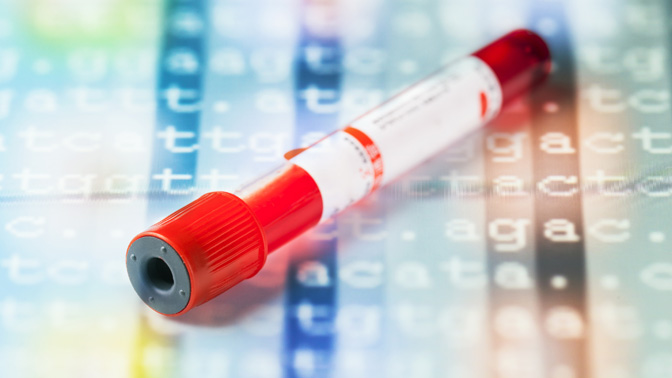
An international team of scientists has discovered a way to identify which healthy individuals are at risk of developing acute myeloid leukemia (AML), an aggressive and often deadly blood cancer.
The findings, published in Nature, illuminate the ‘black box of leukemia’ and answer the question of where, when and how the disease begins, says co-principal investigator Dr. John Dick, Senior Scientist at Princess Margaret Cancer Centre, University Health Network.
“We have been able to identify people in the general population who have traces of mutations in their blood cells that represent the earliest steps on the path towards disease. We can find these traces up to 10 years before AML actually develops,” says Dr. Dick. “This extended window of time gives us the first opportunity to think about how to prevent AML.”
Study author Dr. Sagi Abelson, a post-doctoral fellow in the Dick laboratory, says, “AML is a devastating disease that is often diagnosed too late, with a 90% mortality rate after the age of 65. Our findings show that it is possible to identify individuals in the general population who are at high risk of developing AML using a blood test.”
Co-principal investigator Dr. Liran Shlush, a former fellow in the Dick lab and now Senior Scientist at the Weizmann Institute in Israel, led the approach to use data from a large European health and lifestyle study that tracked 550,000 people over 20 years to determine correlations to cancer. They also had access to routinely collected blood tests taken over 15 years in Israel and housed in a massive database of 3.4 million electronic health records.
The research team extracted data from close to 100 participants who developed AML and compared it to data from over 400 people who did not develop the disease. The researchers sequenced these samples, while looking for differences in the most common genes altered in AML.
The research team used these findings to develop genetic-based tools capable of identifying those who are likely to remain disease-free and those who are at risk for AML. Combined, these results have deepened our understanding of the distinction between harmless mutations that can accumulate with age and those that can lead to AML.
This article was adapted from a story featured at UHN.ca. To watch Drs. Dick and Abelson talk about their research, follow this link.
Sagi Abelson, et al. Prediction of acute myeloid leukaemia risk in healthy individuals (link is external). Nature, 2018. doi: 10.1038/s41586-018-0317-6.
This work was supported by the Leukemia and Lymphoma Society, the Ontario Institute for Cancer Research, the Canadian Cancer Society, the Canadian Institutes of Health Research, the International Development Research Centre, the Terry Fox Research Institute, Medicine by Design – Canada First Research Excellence Fund, the Benjamin Pearl Fellowship from the McEwen Centre for Regenerative Medicine, the Ontario Ministry of Health and Long-term Care, and The Princess Margaret Cancer Foundation. Major international collaborators included the Wellcome Sanger Institute and the University of Cambridge in the UK; and the Weizmann Institute of Science and Clalit Research Institute in Israel. Dr. John Dick is a Tier 1 Canada Research Chair in Stem Cell Biology.




